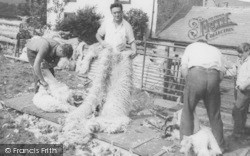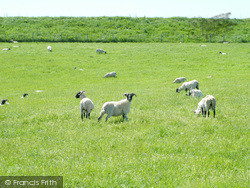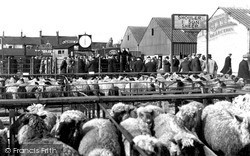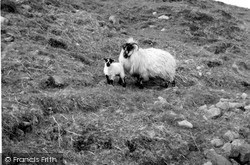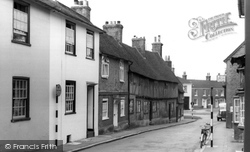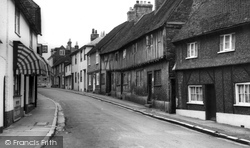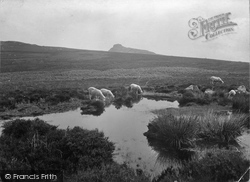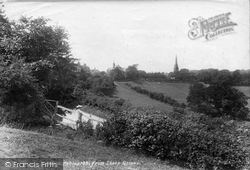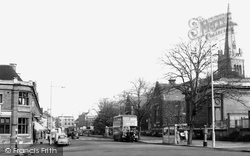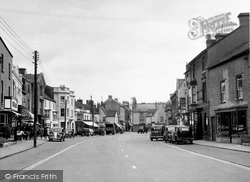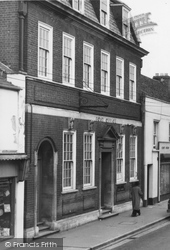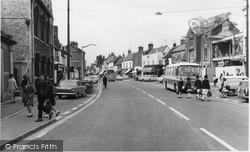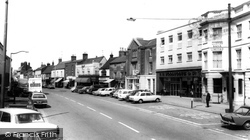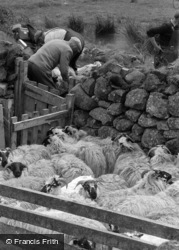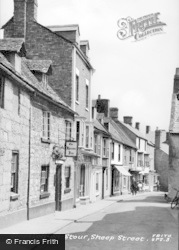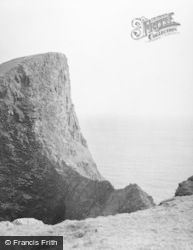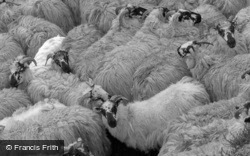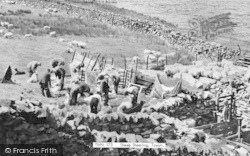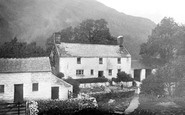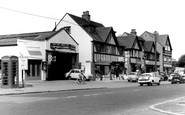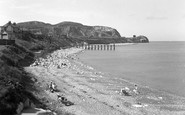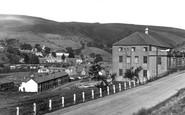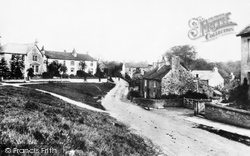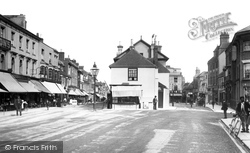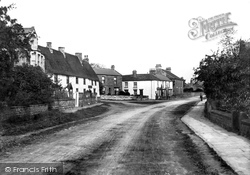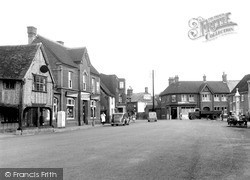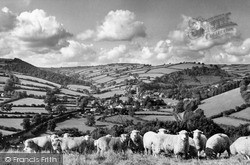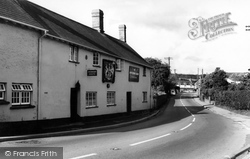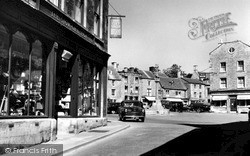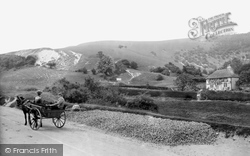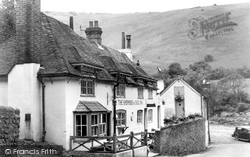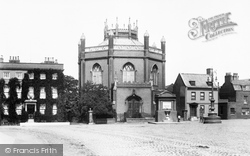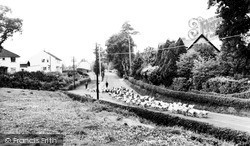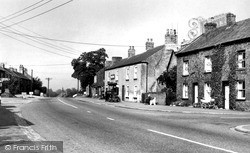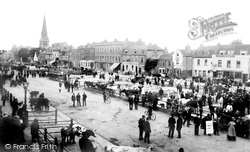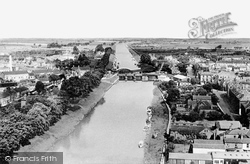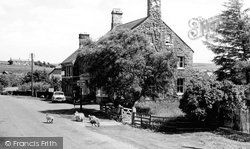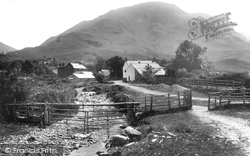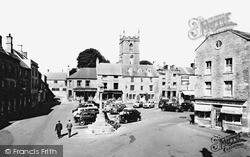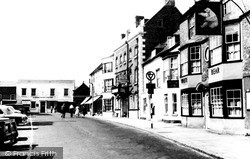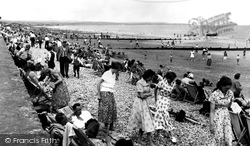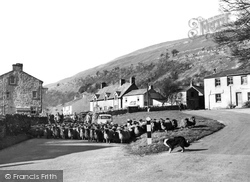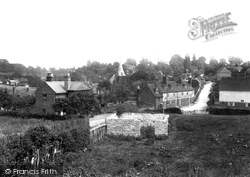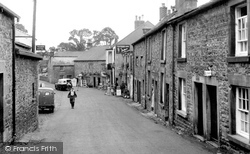Places
1 places found.
Those places high-lighted have photos. All locations may have maps, books and memories.
Photos
217 photos found. Showing results 41 to 60.
Maps
38 maps found.
Books
Sorry, no books were found that related to your search.
Memories
226 memories found. Showing results 21 to 30.
Happy Days 1950s And 60s
I was born and brought up in Weaverham until I left to move to Altrincham with my new wife (and job). Over that 20 year period I have so many happy memories; too many to record in 1000 words. Lived in Lime Avenue all ...Read more
A memory of Weaverham by
Twelve Happy Months
I was born in Nant Gwynant in 1925 and lived there for the first 20 years of my life. In 1944 I was drafted into the army and served in German and Italy. Upon release in 1947, I decided to try and make a career in ...Read more
A memory of Nantgwynant by
My Great Great Grandparents
My great-great-grandfather George (or could be James) Jackson lived in Star Lane Cottages. Apparently the Jacksons had been Hooley people for many years. He kept sheep for a butcher on Farthing Down, Croydon - I can ...Read more
A memory of Hooley in 1890 by
New Farm
I attended Edmondthorpe village school from 1947 to 1953. I live at New Farm with my grandparent Harry and Ethel Gresham. My mother Betty Bratby, nee Gresham, my two brothers Jim and Tim Bratby, uncles John, Harry and Paul. A lodger ...Read more
A memory of Edmondthorpe in 1942 by
Childhood Memories Of Penrhyn Bay
My grandmother and grandfather lived at "Oaklands", in Maesgwyn Road, opposite a corrugated iron church. The road was unmade and beyond the church to the sea was a large meadow where cattle and sheep grazed. On ...Read more
A memory of Penrhyn in 1930
Lament On A London Landing
. When I was a gusty young airman So many seesaw sunny days Were spent with blue girls on Marlborough Downs Our only access, a path both straight and narrow, Thinnest and steepest in its final assent. Emotions ...Read more
A memory of Burderop Park in 1964 by
Miner's Hall,Glyncorrwg
My memories are from the 1950s to the 1970s. My grandparents lived opposite the Miner's Hall for many years. (28 Cymmer Road). My grandfather was a bricklayer in the pit and also the Treasurer for the Miner's Hall. I ...Read more
A memory of Glyncorrwg in 1960
1958 1964
My name is Steve Whitfield, we lived in Whitecroft (on the Crossroads) and that is where I grew up. Went most of my time to boarding school with my two brothers, dating back to the 1960s. My father was employed as Chief Accountant for ...Read more
A memory of Quernmore by
Flimby
I cannot remember a time where Flimby did not feature in my life. My father was born on Ryehill Road, and my grandfather was born and bred in Flimby. It once was a pit village and my grandfather John Watters was an engineer, his father was ...Read more
A memory of Flimby by
Mile Oak Portslade 1938 To 1950
Hello, I was one of the few children who lived in Mile Oak Road and and also played on Broomfields Farm, we lived at no 222 which was the second to last house before the road dropped down the hill to Mile Oak. The ...Read more
A memory of Mile Oak in 1947 by
Captions
200 captions found. Showing results 49 to 72.
The abbey was founded by the Premonstraterians; they were an order noted for preferring secluded areas, both for building their religious houses and for rearing their sheep.
The broad High Street, once the site of the market established under a charter from Edward I, was, at the turn of the last century, still very much a rendezvous for the cattle and sheep farmers of the
The Abbey was founded by the Premonstratensians; they were an order noted for preferring secluded areas, both for building their religious houses and for rearing their sheep.
Sheep on the High Street are a distant memory, but the town has managed to preserve a number of older buildings - including the 16th-century porch on the left.
In the foreground are Closewool sheep, typical of Exmoor.
This pub has a date of 1635 in sheep's knucklebones set in the floor of the bar.
Today there are fewer sheep on the downs, and visitors and residents, like the family in the picture, enjoy this rural amenity.
Older buildings are to be found behind the innocuous facades of 18th- and 19th-century prosperity in Melton, which was boosted by its being at the centre of the hunting world, and by its prosperous sheep
These follow the patterns of old burgage strips, and on market days, sheep were driven in single file along the narrow ways to be counted.
Over the years sheep have grazed the slopes of this famous chalk hill, which rises to 888 ft.
The area was noted for grazing sheep. There is a spring-fed well by the roadside next to the pub. There are great views of the scarp side of the Downs.
In the foreground is the drinking fountain, 'for man, horses, dogs and sheep', dedicated to George Duppa Collins and his wife. It has since been moved to Lynn Road.
Near the middle of Wales, sheep are driven along a back road near the old market town. Llanidloes was one of the major centres for wool and flannel production from the late middle ages.
But this 1950s view of Long Street shows some of the older, Georgian cottages at the top end of the village, where annual horse and sheep fairs were held until the late 1960s.
It provided a centre on the Essex Great Road where sheep and cattle farmers in the area could sell their stock.
Commoners could gather thatch for roofs, cut rushes to strew on the floor, dig sods of turf for fuel, catch wildfowl, and fish in the numerous small lakes as well as putting cattle, sheep and horses
Moorland sheep scatter in front of the Goathland Hotel in the pretty North York Moors village of Goathland.
The small stock enclosure which goes across the Sail Beck was probably used for sheep washing in the summer, before shearing got underway. On the right are the rear elevations of the Fish Inn.
Daniel Defoe records in his 'Tour of Britain' that 20,000 sheep were sold at Stow-on-the-Wold market in the year prior to his visit.
Shipston-on-Stour is situated ten miles south-east of Stratford, and was once a centre for sheep and wool for the Vale of the Red Horse.
In days gone by, this beach would have witnessed the landing of contraband; here the local smugglers would exchange wool and live sheep for their goods.
In this charming photograph, a collie sheepdog marshals a flock of white-nosed Swaledale sheep past the village green at Buckden, which stands alongside the River Wharfe.
The shingle spire of All Saints Church rises above the surrounding houses, while halfway up the hill is the Tudor timbered Old Wool House, in which the fleeces of sheep were washed.
Sheep fleeces were the raw material for the five mills which were once working in the village. Chair-making was another speciality, and there is still a chair-maker here by the church.
Places (1)
Photos (217)
Memories (226)
Books (0)
Maps (38)


